Syrphid flies, also known as hover flies, or flower flies, are often overlooked, but these small beneficial insects are worth attracting to any garden.
An important component of organic gardening is being aware of predator and prey relationships among the leaves and flowers. Our vegetable gardens and orchard were newly planted this year, and as such are somewhat out of balance in regards to the insects that inhabit those areas, with crop-damaging prey species currently far outnumbering available predators, but we are beginning to see a shift in our favor.
Lots of tender green growth in the vegetable gardens earlier this summer resulted in hoards of aphids on a number of our plants from dill to lettuce to sorrel, but fortunately one of the natural enemies of aphids, are certain species of Syrphid Flies.
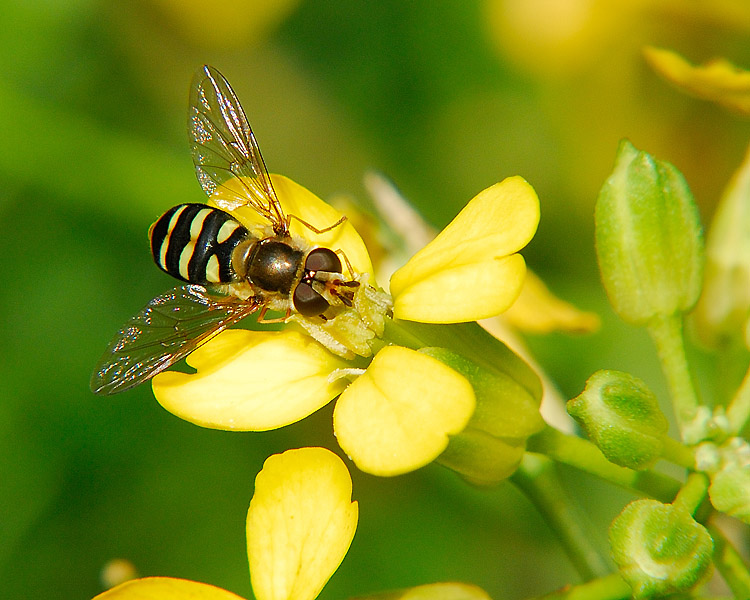

Syrphids are distributed globally, and can be found on every continent, except Antarctica. Most Syrphids range from 5-25mm in length. Identification of Syrphid fly species however can be very challenging, as there are more than 200 genera, encompassing over 6,000 species worldwide. They are excellent mimics, as most species have spots or stripes in yellow and brown. Some Syrphid Flies can be quite hairy, and closely resemble bumble bees or honeybees, whereas others appear to more closely resemble wasps. A key distinguishing feature however is that all Syrphids only have a single pair of wings. Syrphids also cannot sting, so although at first glance they may appear menacing based on coloration, they are in fact harmless to gardeners. Just remember that Syrphid Flies are the good guys!
Adult Syrphid Flies are important garden pollinators, feeding on the nectar and pollen of numerous plant species. Although they are technically flies, in some areas Syrphids may actually be more efficient than other native pollinator bee species.
The larval offspring of some species feast on decaying plant and animal matter. Most importantly for us, the larva of some Syrphid species will preferentially gorge themselves on soft-bodied insects such as aphids and thrips.
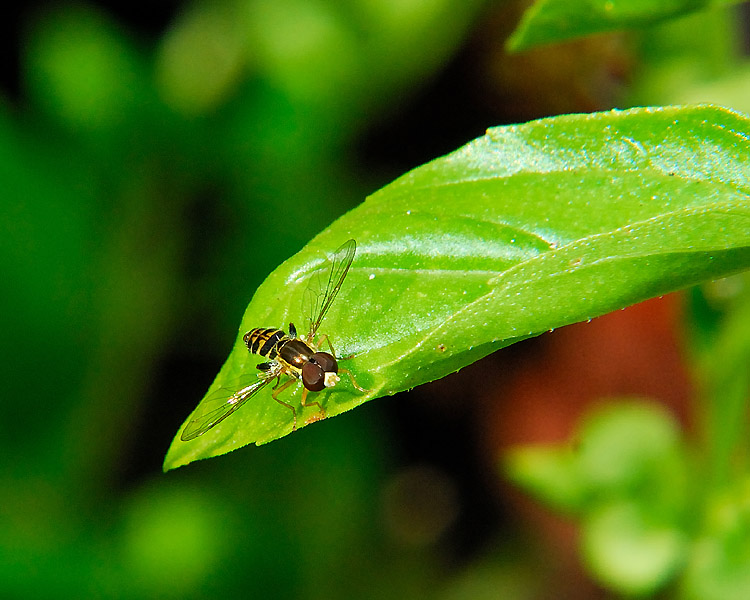

Many local organic lettuce producers now rely heavily on Syrphid Fly populations as a key method of controlling aphids on lettuce crops. This is because a single Syrphid fly larva can literally consume hundreds of aphids in a month!
Considering our own plague of aphids this year, we’d obviously like to attract more aphid-eating Syrphid Flies.
The two most important things that Syrphids require in the garden are food, and shelter.
Beyond the herb and vegetable gardens we’re emphasizing plantings of California native plant species. Certain species of California natives are host to specific species of aphids, and thus in turn can attract particular aphidophagus (aphid eating) Syrphid Flies.
For example, our California wild lilacs (Ceanothus thyrsiflorus) attract the Aphis ceanothi aphid, a larval food source for Allograpta, Toxomerus, and Ocyptamus sp. Syrphid Flies.
Our California poppies (Eschscholzia californica) are reported to attract aphids that are appealing to the larva of Sphaeophoria, Syrphus, and Toxomerus sp. Syrphids.
California honeysuckle (Lonicera hispidula) hosts the honeysuckle aphid Hyadaphis tataricae, and our recently acquired California Coffeeberry (Rhamnus californica) attracts the Macrosiphum rhamni aphid.
Although you don’t necessarily have to know which plant attracts which aphid or Syrphid, this does illustrate how plant choice influences which species of beneficial insects may appear in your own gardens, and highlights the importance of planting a diverse array of species in the garden.
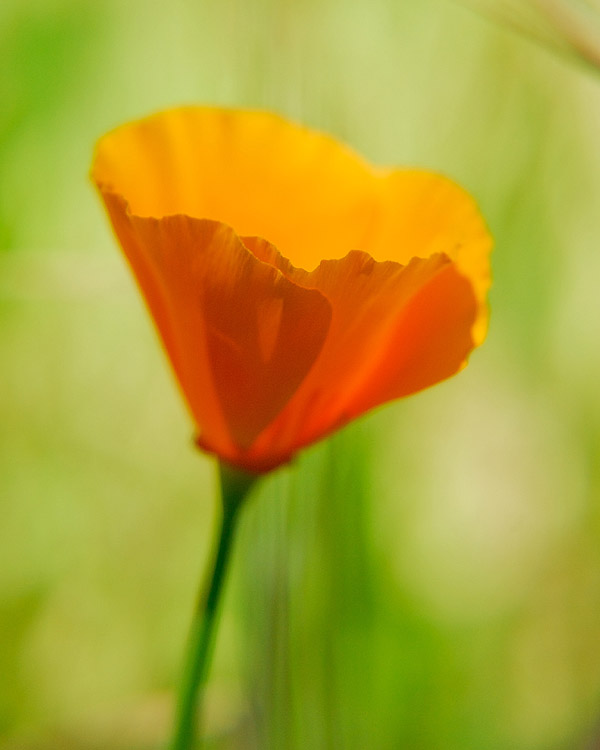

As the adult Syrphids feed on nectar and pollen, including plant species that are attractive food resource plants for the adult flies is also important. Some California natives known to attract adult Syrphids include California Buckwheat (Eriogonum fasciculatum), White sage (Salvia apiana), Goldenrod (Solidago californica), and Yarrow (Achillea millefolium).
Non-natives that are useful for companion planting or inter-planting between vegetable crops include sweet alyssum, coriander, fennel, and mustards.
Numerous culinary herbs also are highly attractive to Syrphid flies, including mint, oregano, lemon Verbena, and culinary sage.
Although the presence of appropriate and sufficient food resources are important for attracting Syrphids, it’s also important to recognize that adult Syrphid Flies also need shelter. Studies have shown that Syrphid Flies won’t fly in strong winds, so it’s advantageous to plant windbreaks, not only to protect plants directly from wind damage, but also to provide shelter for adult Syrphid Flies during periods of inclement weather. Here we’re fortunate to be down in a deep valley surrounded by tall trees, so our gardens are very rarely affected by strong wind gusts.
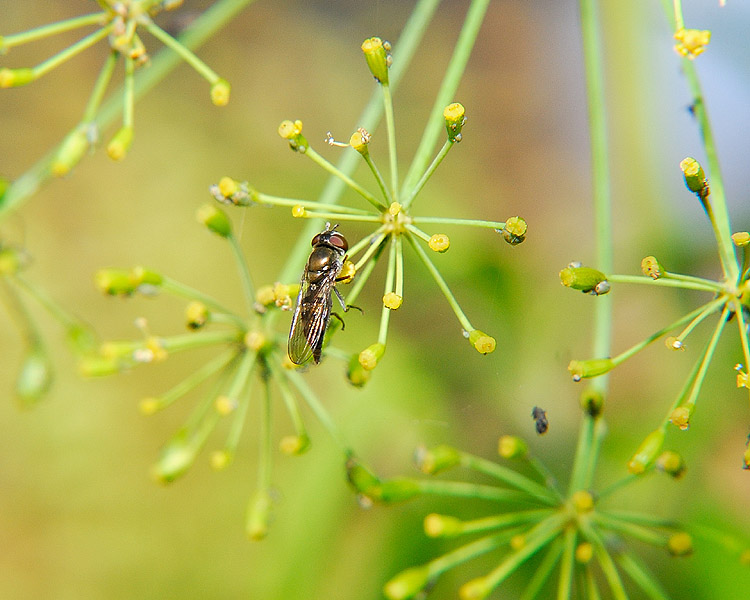
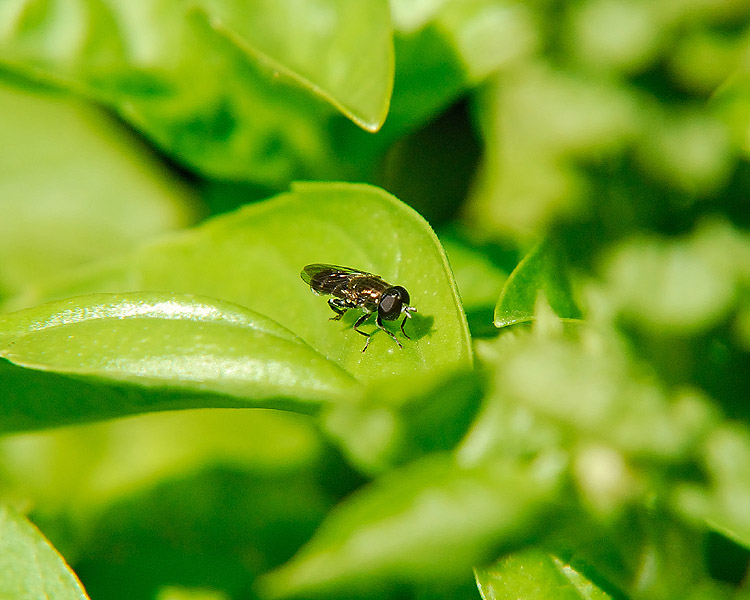
In addition to food and shelter, it is imperative to restrict or eliminate the use of insecticides to control other pests in the garden, including products approved for use in organic production, such as Spinosad (Entrust®) to control leaf miners or sawfly, as such products will interfere with Syrphid Fly activity in the garden.
Next time you see a small bee-like visitor to your garden, take a closer look…it may turn out to be a beautiful and beneficial fly!
——————-
For much more about Syrphid Flies, see:

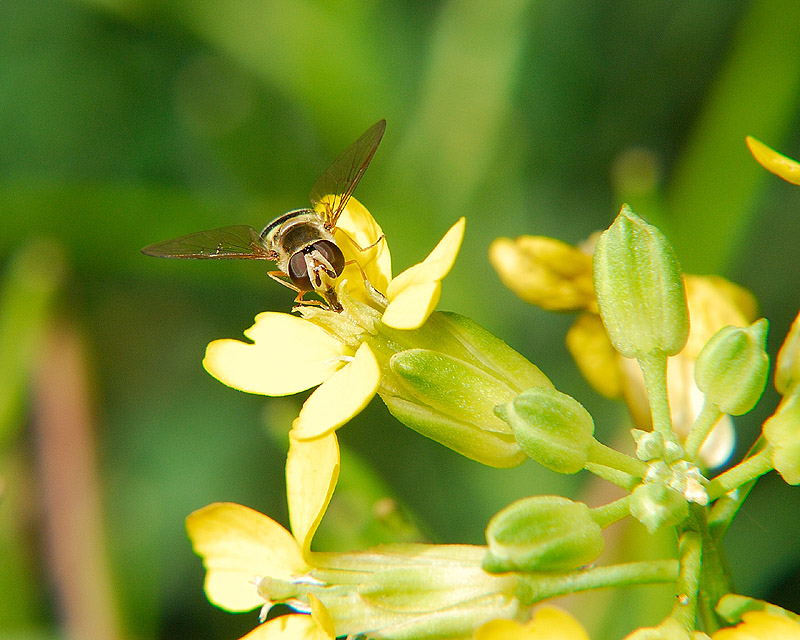
Oh Clare, your images are pure delight. What a joy these little pollinators are. Lovely to see so many varieties and their plant foods. Liked the bit about giving them shelter.
Laura
Neat! I like how they’re more white and black striped than the native wasps I see. I’ve seen quite a few admire my Erigeron glaucus, Santa Barbara Daisy.
Thanks for your informative post. I’ve seen these little fellows around the garden and never realised how wonderful they were before.
My favorite hover fly attractor is Meadowfoam, Limnanthes douglasii. I always see a lot of them in the garden when it’s blooming. The deer eat them, though.
We had a little Meadowfoam in the garden earlier this year, but sadly it attracted the deer more than the syrphid flies 🙁
Well, I will take a closer look! I knew nothing about syrphid flies, but am pleased to now. Always enjoy your in-depth look at specific species.
Very informative! We just studied beneficials in our insects class today and talked about the hover fly–I love bugs. Thanks for the post 🙂
This was really interesting. I did notice more Hover flies in our yard this year, but had no idea how many different types there were. The ones here seemed almost aggressive as they chased some of the bees away from flowers. Good to know that they are important pollinators.
Liked the video. I am not very knowledgeable about the larvae. I see they come in different colours and are more caterpillar like than I expected.
This year has been a good one for Hoverflies. For some reason they find our small conservatory irrisistable, even when I have taken the plants outside. Unlike bees they get stranded up on the glass roof and being soft hearted I spend a fair bit of time catching and releasing them.
Clare I’ve never seen the larvae before and I wonder if I’ve mistaken some caterpillars for hoverfly larvae in the past. What size compared to caterpillars are the larvae?
Hoverflies are my best friends in the garden and I love taking photos of them aswell and trying to ID all the different types. I never knew that some were more partial to certain types of flowers than others.
Those photos are great but that video is just awesome!
Rosie, apparently the larvae can range anywhere from 1mm to 14mm in length, so on the small to average size for a caterpillar. There also seems to be some variability in color too, but with so many species of Syrphid Flies that’s not surprising. Isn’t the video great? I love how almost ‘excited’ the larva looks when it finally catches its prey 😛
Great advice! I wish i could attract more beneficial insects to my garden. They seldom come all the way up.
Love the photo of the poppy
Wonderful images and great info. You do know your insects and bees. I see a little bee and it is automatically a bee. I never thought to look closer, but I will now.
Really great information and pictures. I often see syrphid flies on toyon. The flowers of toyon smell kind of like rotting meat so I thought there was a connection with this fly pollinator and the smell. Not sure though since I have also seen syrphid flies on sweet smelling manzanita and ceanothus flowers.
My only thoughts on the use of non-native companion plants is that fennel, some mustards and sweet allysum really are invasive when they escape – and they do escape. I know they attract pollinators but this is a big problem. What do you think?
Thanks for the post. Barbara
I agree, some of the non-natives, although serving a purpose as either trap crops, or pollinator attractors, can be a huge problem. Fennel, mustard and sweet alyssum have been evaluated commercially and determined to attract the right species of aphids for Syrphids, but it certainly doesn’t mean other native species couldn’t work, and as we’re not planting zillions of acres of crops here, we certainly have the latitude to stick to the natives for this purpose. Ideally only regionally native plants would be purposed to the task of companion planting in any garden.
I have seen these on my roses. Didn’t realise they were predators. But I leave all the bugs in peace, except the mosquito that dares to bite me ;>)
Thanks for the great information! I’m going to look out for these Syrphid flies. I frequently see what my husband calls “box flies”. But I’ve never gotten a close look at one, since they are always flying in a box-like pattern. Do you think these might be syrphid flies?
I’m not sure if those would be Syrphid Flies or not. The Syrphids I notice here are usually darting around the flowers. I’m not sure it would be as easy to recognize one just flying about as they’re so small.
I love these little critters and try to invite them into my garden…Aren’t they clever to mimic a scary bee or wasp to keep predators away. Nature is amazing. Your photos are, too and I appreciate all the information gail
Good post! I am learning more about the good and the bad and having to put up with the bad to get the good. Sounds like you are starting to get a balance.
Very interesting! Where do you learn all this tuff? The movie of the syrphid larva eating the aphid was something out of National Geographic! This summer I noticed tiny bee-like flies all over my garlic chives. Now I think these may have been syrphids; at least I hope so!
Mmmm. I’m sure I have enough honeysuckle aphids on my Lonicera h. to feed a large family of these guys. Hope next year they’ll show up…
Very interesting post! I know so little about insects.
Ah. I love hover flies. They’re really cool to watch. I never would have guessed their larva looked like that though. Makes me wonder if maybe I killed some in the past. I would normally be grossed out by a video like that, but I was so happy to see the aphid getting eaten I didn’t notice.
I always thought they could sting ….I guess you learn something new everyday:)
Another informative post, Clare. Thank you … I had no clue!
Thanks for sharing on this beneficial insect. Actually there are many beneficial insects out there. Coincidentally, I just mentioned about a minute black lady beetle and a metallic green fly which are also beneficial insects.
I love syrphids and these are some delightful images of a tiny insect that is often hard to photograph. Very well-researched post!